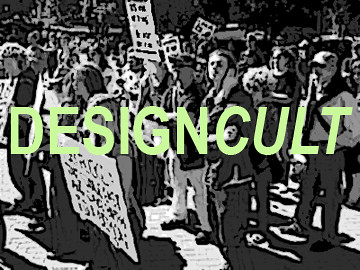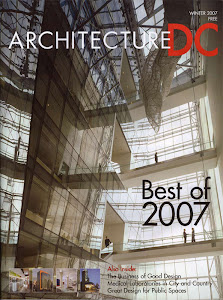 Well the opening pitch has been thrown out as the Nationals' season has begun. The new stadium complete just in time for opening day, the Nationals won their season opener against the Atlanta Braves. But meanwhile, just upstream, another stadium sat empty. With the exodus of baseball and the Post and Times reporting the eminent departure of the D.C. United, RFK's days seem to be numbered.
Well the opening pitch has been thrown out as the Nationals' season has begun. The new stadium complete just in time for opening day, the Nationals won their season opener against the Atlanta Braves. But meanwhile, just upstream, another stadium sat empty. With the exodus of baseball and the Post and Times reporting the eminent departure of the D.C. United, RFK's days seem to be numbered.
As a recent transplant to this part of the city, living a stones throw from RFK Stadium, I've begun to really take a close look at the plans to redevelop the area. For now, only one thing is certain...there is a great deal of uncertainty about what will happen here. On the one hand, the National Capital Planning Commission has prepared a redevelopment study for the area which recommends demolishing RFK and replacing it with a mixed-use development, including office space, residences, and a monument and waterfront park space. Then there's Mayor Fenty's intention to woo the Redskins back to RFK.
With change on the horizon, I'm left pondering what really is the best option for the RFK Stadium site. In this two part series I'll consider the pros and cons of each notion. Also, I'd like to hear what others have to say. Be sure to vote in our poll on this issue, and leave your comments! What would a new or retrofitted RFK mean for the area? Would it really even bring a notable change at all? On the one hand the return of the Redskins to a new or retrofitted RFK could be just the stimulus needed to boost much of the area, much like the area around the new Nationals' ballpark is now experiencing. But my concern here is that much of what doesn't work for the RFK site currently would remain unchanged. There are some major shortcomings of the current RFK site. These include the sea of parking which surrounds RFK, making it much more isolated than its replacement. And while the new stadium falls short of making a meaningful link to the Anacostia River just beyond its bleachers, the waterfront is not completely ignored either, whereas RFK's proximity to the Anacostia is imperceptible. If not for the damp chill that issues forth from the river on cold winter mornings, one would forget that the river was just out of sight, beyond this mammoth bowl. Traffic patterns and a loop of highway ramps deliver impatient morning commuters into the city, dumping them onto residential East Capitol and C Streets, making pedestrian safety a concern. Would proposed renovations to the stadium site rectify these issues? I fear that they would not. And there is the greater concern regarding the seasonal uses of a sports stadium. (Granted I do enjoy the off-season respite.) True other auxiliary uses might support the facility in the off-season, but with the Armory just steps away, and other complexes throughout the city, is there a need for more assembly space? In fact one has to ask the more pressing question: Does DC really need another stadium?
What would a new or retrofitted RFK mean for the area? Would it really even bring a notable change at all? On the one hand the return of the Redskins to a new or retrofitted RFK could be just the stimulus needed to boost much of the area, much like the area around the new Nationals' ballpark is now experiencing. But my concern here is that much of what doesn't work for the RFK site currently would remain unchanged. There are some major shortcomings of the current RFK site. These include the sea of parking which surrounds RFK, making it much more isolated than its replacement. And while the new stadium falls short of making a meaningful link to the Anacostia River just beyond its bleachers, the waterfront is not completely ignored either, whereas RFK's proximity to the Anacostia is imperceptible. If not for the damp chill that issues forth from the river on cold winter mornings, one would forget that the river was just out of sight, beyond this mammoth bowl. Traffic patterns and a loop of highway ramps deliver impatient morning commuters into the city, dumping them onto residential East Capitol and C Streets, making pedestrian safety a concern. Would proposed renovations to the stadium site rectify these issues? I fear that they would not. And there is the greater concern regarding the seasonal uses of a sports stadium. (Granted I do enjoy the off-season respite.) True other auxiliary uses might support the facility in the off-season, but with the Armory just steps away, and other complexes throughout the city, is there a need for more assembly space? In fact one has to ask the more pressing question: Does DC really need another stadium?
This is in fact the very question being posed regarding the fate of the DC United -- but that's soccer, which all seem to agree just doesn't generate the same revenue as DC's other sports teams. It would seem that a football stadium, on the other hand, offers greater incentives.
This leads me to wonder: Was there a missed opportunity? Well, perhaps. In this age of downsizing in the name of environmental consciousness, does it make sense that DC is now looking to have four separate facilities for its five different sports teams? Considered the nation's first multi-purpose stadium, was that one of the things that RFK actually got right? With the Nationals already in a new stadium, and all indications of a new soccer stadium on the way, this now seems to be a question left to the next generation of urban planners. While I suppose that there may be some notion of a shared football and soccer facility, no such suggestion has been made. Though the thought of a multi-team stadium a la Herzog & de Meuron's Allianz Arena is appealing. Should the Mayor succeed in his efforts to bring the Redskins back to the District, hopefully an evaluation of the things that don't quite work for RFK will be considered. Access to the waterfront in the creation of a waterfront park, an idea proposed by the NCPC's proposal, would certainly be a good start, and perhaps justified as a public assembly space or 'front lawn' for the stadium. Considering the amount of runoff produced by the parking lots that surround the stadium which flows into the already polluted Anacostia River, it would certainly be the ecologically sensitive thing to do. Parking therefore may need to be relegated to parking structures, the reduced footprint and increased density of which could be seen as positives in this reimagining of the site, leading to residential and retail blocks on the northern and southern sides of the stadium and reinforcing monumental East Capital Street on the west, in much the same way that plans for land adjacent to the new Nationals' ballpark hopes to transform South Capital Street. Interestingly, other issues that are addressed by the NCPC study would be relevant to consider when imagining a new RFK, such as reworking existing traffic patterns to address the transition between the city grid and nearby freeway. I'll weigh the pros and cons of that proposal in my next post.
Should the Mayor succeed in his efforts to bring the Redskins back to the District, hopefully an evaluation of the things that don't quite work for RFK will be considered. Access to the waterfront in the creation of a waterfront park, an idea proposed by the NCPC's proposal, would certainly be a good start, and perhaps justified as a public assembly space or 'front lawn' for the stadium. Considering the amount of runoff produced by the parking lots that surround the stadium which flows into the already polluted Anacostia River, it would certainly be the ecologically sensitive thing to do. Parking therefore may need to be relegated to parking structures, the reduced footprint and increased density of which could be seen as positives in this reimagining of the site, leading to residential and retail blocks on the northern and southern sides of the stadium and reinforcing monumental East Capital Street on the west, in much the same way that plans for land adjacent to the new Nationals' ballpark hopes to transform South Capital Street. Interestingly, other issues that are addressed by the NCPC study would be relevant to consider when imagining a new RFK, such as reworking existing traffic patterns to address the transition between the city grid and nearby freeway. I'll weigh the pros and cons of that proposal in my next post.
Wednesday, April 9, 2008
Considering the Future of Stadium-Armory -- Part One: A New RFK?
Labels:
National Park Service,
RFK,
Waterfront Redevelopment
Subscribe to:
Post Comments (Atom)









No comments:
Post a Comment